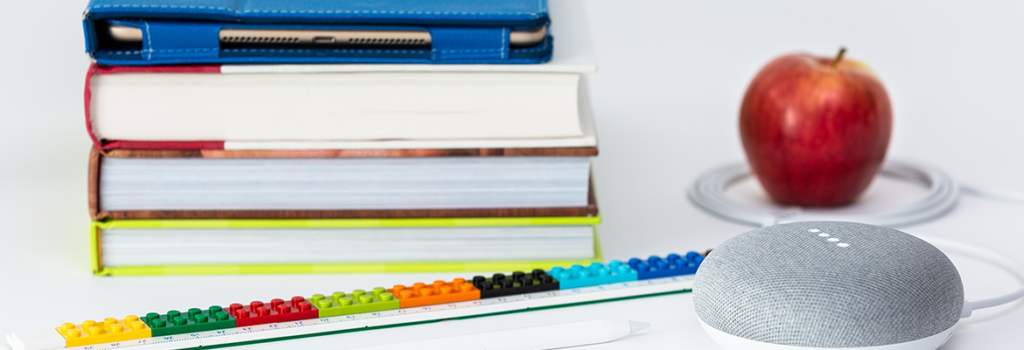
Schools and libraries provide some of the most important services in our society, acting as gateways to knowledge and learning for people from any walk of life.
In our digital age, Internet access and connections have become integral for schools, libraries, and other educational institutions.
But everyone doesn’t have access to – or funds for – the Internet access and telecommunications services their students and communities need in the era of 4G (and the soon-to-be 5G era), especially in rural and underfunded areas of the country.
Thankfully, with the Schools and Libraries (E-rate) Program, eligible schools and libraries can apply for discounts to obtain the affordable Internet and telecommunications services they need.
Here’s the back-to-school guide to how you can use the E-rate Program to access fiber-optic connectivity.
What is the E-rate program?
Administered by the Universal Service Administrative Company (USAC), a not-for-profit corporation designated by the U.S. Federal Communications Commission (FCC), the E-Rate program’s goal is to help schools and libraries have access to the Internet and to telecommunications services.
It has existed since 1997, and in 2014, the FCC updated this program with two Modernization Orders so it could better serve eligible institutions.
Who is eligible for the E-rate program?
You must meet the USAC’s definitions of eligible schools or libraries.
- Eligible schools must meet the definitions of elements and secondary schools as found in the No Child Left Behind Act of 2001. (Some exceptions to this rule do exist, though. To learn more, visit the USAC website.)
- Eligible libraries must fit the definition that of a library/library consortium that’s stated in the Library Services and Technology Act of 1996 (LSTA), as well as be able to receive funding from their state library administrative agency.
What services does the E-Rate program provide discounts for – and where does fiber fit in?
Eligible schools and libraries can apply for funds for five service types that fall under two main categories: Category One Services and Category Two Services.
Category One Services include Data Transmission Services and/or Internet Access and Voice Services (though Voice Services will be discontinued starting in the 2019 funding year).
Category Two Services, meanwhile, consist of Internal Connections, Managed Internal Broadband Services, and Basic Maintenance of Internal Connections.
Fiber connectivity falls under the definition of what the program defines as Data Transmission Services and/or Internet Access service types.
Specifically, this breaks down into three kinds of eligible fiber services:
- Leased lit fiber (the fiber network is owned and managed by the service provider, and the school or library using the network has to pay a recurring fee for data transportation)
- Leased dark fiber (the school or library leases capacity and pays a separate fee for modulating equipment)
- Self-provisioned networks (the eligible school or library owns and maintains the network in this case)
What kind of fiber charges does the E-rate Program help fund?
If you’re applying for discounts for leased lit fiber, you might qualify for discounts on special construction charges, basic installation charges, and monthly recurring charges.
Leased dark fiber network charges include network equipment, special construction charges, basic installation charges, maintenance and operations charges, and recurring dark fiber lease or IRU payments.
Lastly, if you’re applying for funding for a self-provisioned network, the E-rate Program would support special construction charges, network equipment charges, and maintenance and operations charges.
What is the range of discounts an eligible school or library can have access to under the E-rate program?
The range varies from 20-90%, and the discount percentage depends on the school district’s poverty level and status (i.e., urban or rural).
Available funding is capped at $4 billion per year.
How do you apply for this program?
To apply for funding for the E-rate Program, follow these five steps.
- Set up an account for your organization in the E-Rate Productivity Center (EPC), the E-rate Program’s account and applicant management portal.
- Next, complete and certify FCC Form 470 (Description of Services Requested and Certification Form) in the EPC. This is when you request specific services for your organization.
- Wait 28 days (at least) before you can select a service provider. During these 28 days, the competitive bidding process takes place.
- Choose the most cost-effective service provider, complying with the bidding requirements of the FCC and any local and state requirements.
- File and certify FCC Form 471 (Services Ordered and Certification Form) to request funding from your selected service provider. Note: this must be done during the application filing window.
Once approved, you will receive a Funding Commitment Decision Letter (FCDL) in the EPC letting you know how much funding you’re approved for.
Where can you go for more information?
USAC’s website, https://www.usac.org/, is the #1 resource to visit for more information about the E-rate program. Keep up-to-date on program changes and modifications and get answers to most of (if not all) of the questions you have on their site.
